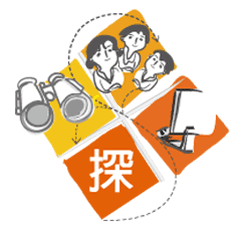 |
||||||
|
|
About TILE |
The objective of TILE research team is to develop and provide innovative instructional materials and tools for science education. Through long-term collaborations with teachers at local schools and an ongoing dialogue between theory and practice, the TILE team designs learning environments to facilitate students’ conceptual understanding, cultivate their inquiry abilities, and contribute to the goal of developing independent learners. Leadership of this team is made up by the partnership of three professors from National Taiwan Normal University and they are Professor Fu-Kwun Hwang, Professor Ying-Shao Hsu and Professor Hsin-Kai Wu. The team was first formed as a joined forces to carry out a research project from Ministry of Education in February of 2004. As a physics professor, Hwang has made substantial contribution to physics education. Many well known and popular simulations in physics have been developed (available from NTNUJAVA web site) by Prof. Hwang. He also integrated many science teaching and learning tools into a moodle based content management system, named as “Science Park”. Hsu is a professor of science education institute and Professor, by courtesy, of geosciences department. She has extensive experiences on integrating information technology in teaching and learning.. She has worked with high school teachers over a long time to develop teaching model that integrates technology. Professor Wu from science education institute has accumulated solid foundation in science education theories and research experiences in addition to providing expertise in research methodology and analysis skill to help sort out student’s learning process in complicated environment. Thanks to many yearsexperiences of collaboration, the team of three has developed strong chemistry with regards to setting objective, job assignment and coordinating execution plans. The science learning environments created by TILE incorporate innovative technologies, provide students with support and scaffold, and engage students in authentic inquiry. Features of these environments include: (1) helping student visualize scientific concepts and principles to enhance their conceptual understanding; (2) providing multiple linked representations (e.g., text, illustration, formula, concept sketch, flow chart and animation) and web-based sharing tools (e.g., chat rooms and discussion forums) to promote sharing and communication; (3) integrating innovative and advanced technologies that enable teachers to utilize online resources and support students to conduct authentic scientific investigations. Teachers and graduate students interested in learning technologies and digital learning are welcome to join us. Together we could cultivating research talents and make significant contributions to science education in Taiwan. |
TILE研究團隊 電話:02-77346806 地址:116台北市文山區汀州路四段88號 國立台灣師範大學分部 科教大樓
Copyright © 2009 Center for Technology‐Infused Learning Environments, NTNU. All rights reserved.